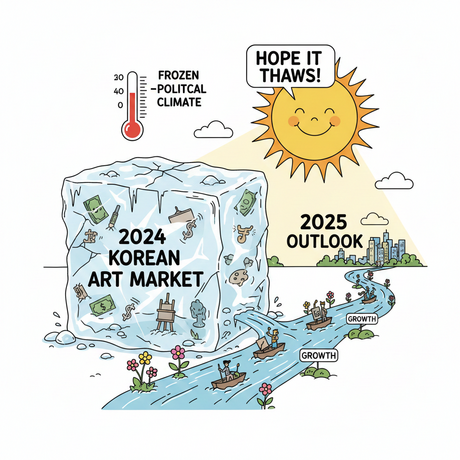The photography world continues to evolve with exciting developments across multiple disciplines, from cutting-edge sports photography to groundbreaking astrophotography techniques. Recent highlights showcase the dynamic nature of visual storytelling and the innovative approaches photographers are taking to capture compelling images.
In sports photography, a vibrant action shot of Formula 1 driver Lewis Hamilton has garnered attention for its creative technique. The image, captured at 1/10 second with a Nikon DSLR camera, demonstrates how slower shutter speeds can effectively showcase the dynamic energy of high-speed racing. This approach illustrates the artistic possibilities that emerge when photographers experiment with unconventional settings to create motion blur effects that convey speed and excitement.
Astronomers and night sky enthusiasts have access to comprehensive guidance for August 2025 astrophotography opportunities. The month presents numerous celestial events and optimal conditions for capturing stellar imagery, with detailed recommendations for equipment settings and timing to maximize photographic results.
The literary side of photography is experiencing renewed interest, with comprehensive coverage of the 25 best photographer autobiographies ever written. These works provide intimate insights into the creative processes and personal journeys of renowned visual artists. Notable among recent releases is Martin Parr's candid autobiography, where the acclaimed Magnum photographer shares unfiltered perspectives on his career and approach to documentary photography.
Bruce Weber's 'My Education' stands out as a masterclass in trust and intimacy within portrait photography, demonstrating how successful portraiture relies on establishing genuine connections between photographer and subject. The work emphasizes the psychological aspects of creating compelling human-centered imagery.
Lighting equipment has evolved beyond mere functionality, with modern light stands incorporating aesthetic design elements that appeal to photographers' visual sensibilities. This trend reflects the growing recognition that creative tools themselves can inspire artistic expression.
Educational opportunities abound with numerous online photography masterclasses taught by professional photographers now available at no cost. These resources cover diverse topics from technical fundamentals to advanced creative techniques, making high-quality instruction accessible to photographers at all skill levels.
However, industry observers note concerning trends regarding the consumption and appreciation of photography in the digital age. There are growing concerns that audiences are becoming desensitized to exceptional photographic work, while algorithmic systems increasingly influence what imagery receives visibility and engagement online. This shift potentially undermines photographers' creative autonomy and affects how visual art is discovered and valued.
Competition and recognition opportunities continue to expand globally. The Mangrove Photographer of the Year competition has highlighted critical environmental documentation, particularly focusing on the Everglades' iconic bird species that face potential extinction due to habitat loss. This competition exemplifies photography's role in conservation awareness and environmental advocacy.
The Music Photography Awards (MPAs) represent the only global competition dedicated specifically to music photography, seeking submissions that capture the energy and emotion of musical performances across all genres. This specialized recognition acknowledges the unique skills required to document live music effectively.
The Wellcome Photography Prize has revealed unexpected imagery that challenges viewers' preconceptions, demonstrating photography's power to reveal hidden aspects of science and human experience. Such competitions push photographers to explore unconventional subjects and perspectives.
Commercial photography faces significant transformation with artificial intelligence's increasing presence in the industry. Professionals are developing strategies to maintain relevance and value in their services, drawing on historical precedents and focusing on uniquely human creative contributions that technology cannot replicate.
Recent data indicates that photography ranks as the top freelance industry in the United Kingdom, suggesting robust opportunities for independent practitioners. This trend encourages photographers to consider transitioning from traditional employment to freelance careers.
Website development has become increasingly accessible for photographers, with modern platforms simplifying the process of establishing professional online presence. Industry experts emphasize that having a dedicated website remains essential for serious photographers in 2025, with user-friendly tools eliminating previous technical barriers.
Stock photography markets continue evolving, with major platforms like Getty Images and Shutterstock exploring merger possibilities that could reshape how photographers monetize their work. Adobe's integration of AI manipulation tools for stock images raises questions about creator compensation and the future of traditional stock photography.
Exhibition venues are adapting to changing needs, with Photo London relocating for the first time in a decade, reflecting the evolving landscape of photography presentation and sales. Major retrospectives and contemporary showcases continue attracting significant audiences, demonstrating sustained public interest in photographic art.
National Geographic continues setting standards for documentary photography, with public events providing insights into the qualifications and experiences required for their prestigious photographer positions. Such opportunities inspire emerging photographers while highlighting the rigorous standards expected in professional documentary work.
Digital publishing maintains strong readership, with photography magazines offering substantial bonus content and educational resources with their regular issues. Subscription services provide cost-effective access to professional insights and technical guidance.
Technical education emphasizes fundamental skills like proper LCD screen usage for achieving sharper, better-exposed photographs. Such instruction addresses common oversights that can significantly impact image quality, regardless of equipment sophistication.
The debate between electronic viewfinders and LCD screens for composition continues among professionals, with some experienced photographers preferring screen-based composition despite potential perceptions about professionalism. This discussion reflects ongoing evolution in camera technology and user preferences.
Specialized equipment releases include infrared editions of popular camera models, though availability remains limited to specific professional applications. These developments demonstrate manufacturers' commitment to serving niche markets within the broader photography community.
Contemporary photography exhibitions showcase diverse approaches from established and emerging artists, with venues worldwide presenting work that spans traditional and experimental techniques. Online exhibitions have expanded access to photography collections, making significant works available to global audiences without geographical constraints.
Software development continues improving video editing capabilities, with new releases offering enhanced functionality for photographers expanding into motion imagery. These tools increasingly bridge the gap between still and moving image creation.
The integration of mobile technology with professional photography workflows demonstrates how smartphones complement rather than replace dedicated camera equipment. Advanced computational photography features in mobile devices provide powerful editing capabilities for images captured with professional cameras.
Industry trade shows face security challenges, with reports of equipment theft highlighting the need for enhanced protection measures at major photography events. Despite such incidents, these gatherings remain crucial for product demonstrations and professional networking.
Documentary photography continues addressing environmental and social issues, with photographers using their skills to advocate for conservation and raise awareness about critical challenges facing natural ecosystems. This work demonstrates photography's ongoing relevance as a tool for social change and environmental protection.





























